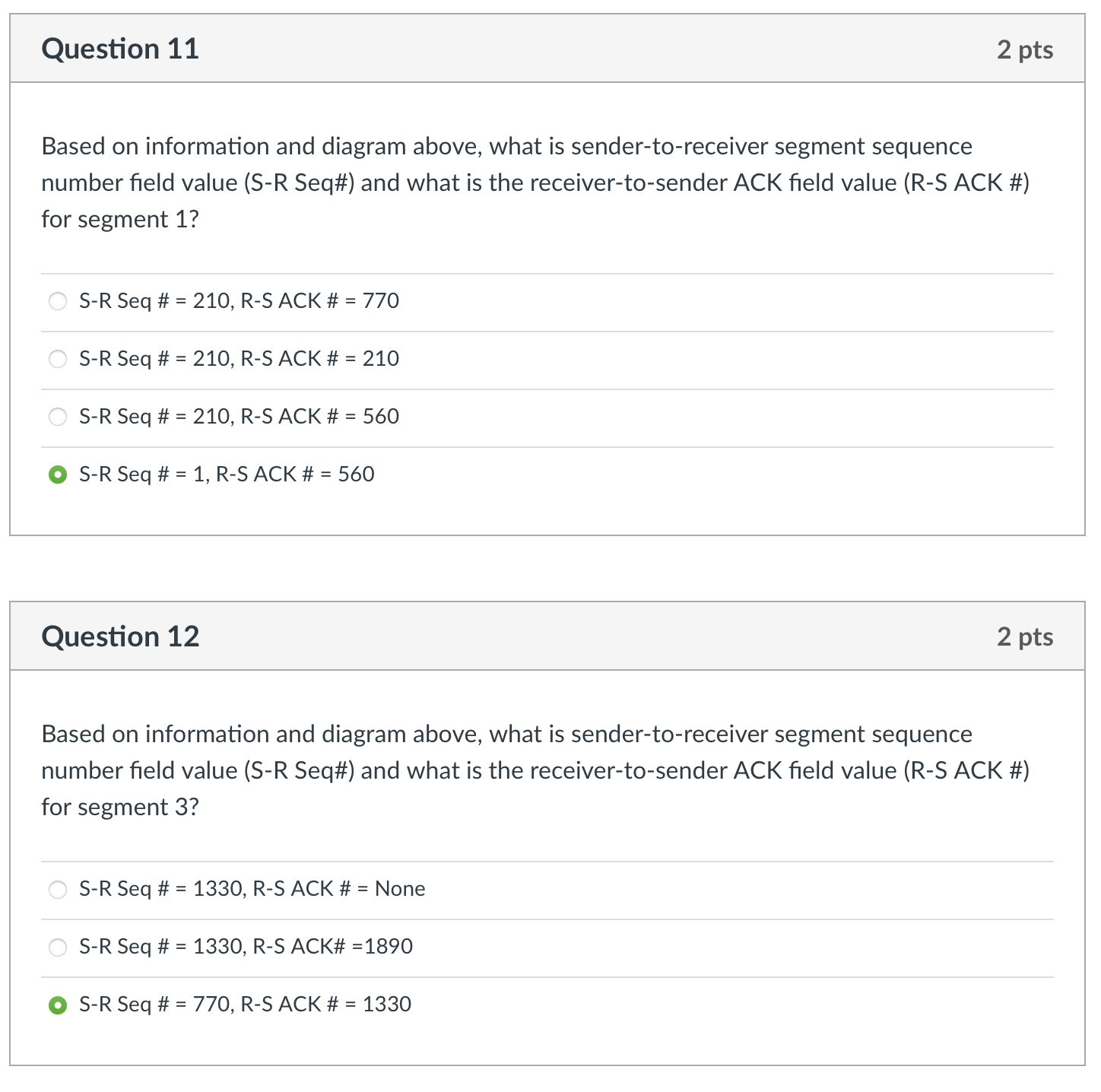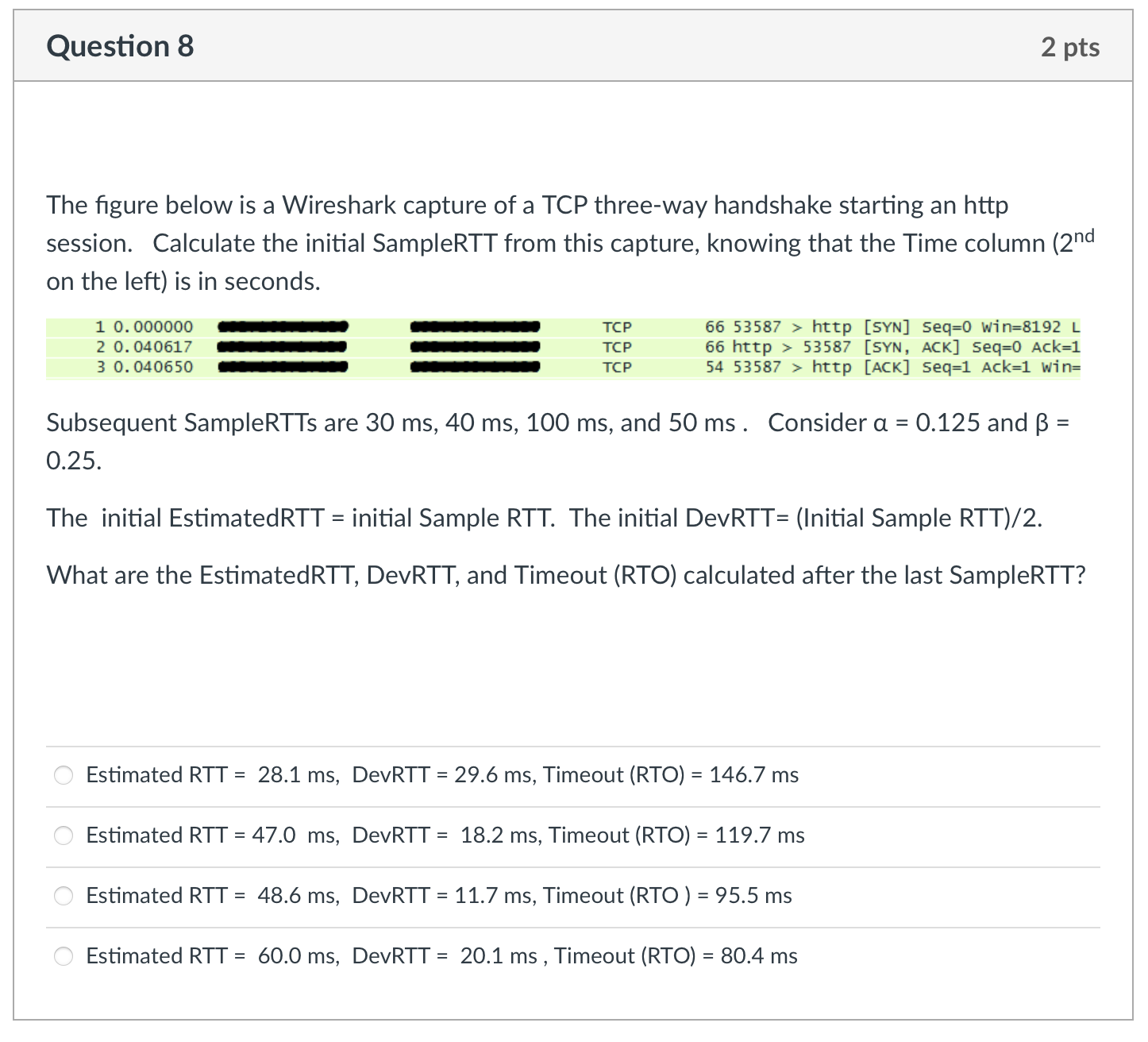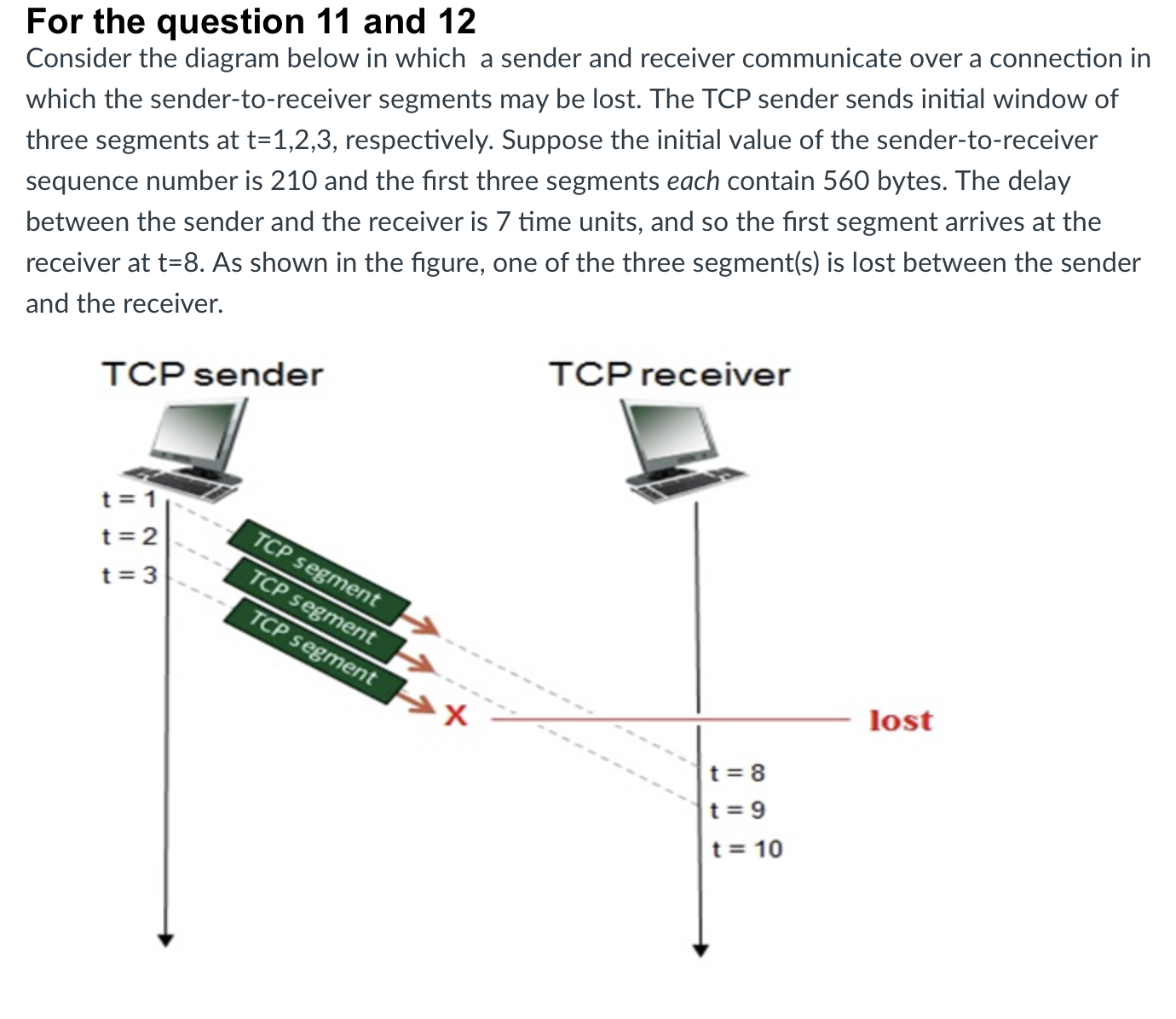Answered step by step
Verified Expert Solution
Question
1 Approved Answer
Based upon the TCP Congestion Window vs. Transmission Round in the diagram above, during which transmission round is the 45th segment sent? OOOO O






Based upon the TCP Congestion Window vs. Transmission Round in the diagram above, during which transmission round is the 45th segment sent? OOOO O 5th 6th 7th 13th Question 11 Based on information and diagram above, what is sender-to-receiver segment sequence number field value (S-R Seq#) and what is the receiver-to-sender ACK field value (R-S ACK #) for segment 1? S-R Seq # = 210, R-S ACK # = 770 S-R Seq # = 210, R-S ACK # = 210 S-R Seq # = 210, R-S ACK # = 560 S-R Seq #1, R-S ACK # 560 Question 12 S-R Seq # = 1330, R-S ACK # = None 2 pts Based on information and diagram above, what is sender-to-receiver segment sequence number field value (S-R Seq#) and what is the receiver-to-sender ACK field value (R-S ACK #) for segment 3? S-R Seq # = 1330, R-S ACK# =1890 O S-R Seq # = 770, R-S ACK # = 1330 2 pts Question 6 For the two bytes(11001011 and 01100101) below that are to be added together, where would be the place where one bit is flipped in each of the 2 bytes and yet the l's complement of the sum doesn't change? Flip the bits in the 2nd position 1 0 1 1 0 1 Flip the bits in the 7th position 1 1 0 0 1 0 0 1 0 1 1 0 0 1 0 Flip the bits in the last position 1 1 0 0 1 0 1 0 0 1 1 0 1 0 1 1 0 0 Flip the bits in the 4th position 1 0 0 0 1 0 1 1 0 1 0 1 1 0 0 1 0 1 1 1 1 1 1 1 2 pts 1 Question 8 The figure below is a Wireshark capture of a TCP three-way handshake starting an http session. Calculate the initial SampleRTT from this capture, knowing that the Time column (2nd on the left) is in seconds. 1 0.000000 2 0.040617 3 0.040650 O Estimated RTT = Subsequent SampleRTTs are 30 ms, 40 ms, 100 ms, and 50 ms. Consider a = 0.25. The initial EstimatedRTT = initial Sample RTT. The initial DevRTT= (Initial Sample RTT)/2. What are the Estimated RTT, DevRTT, and Timeout (RTO) calculated after the last SampleRTT? TCP TCP TCP Estimated RTT = 66 53587> http [SYN] Seq=0 win=8192 L 66 http > 53587 [SYN, ACK] Seq=0 Ack=1 54 53587 > http [ACK] Seq=1 Ack=1 win= Estimated RTT = 47.0 ms, DevRTT = 18.2 ms, Timeout (RTO) = 119.7 ms 28.1 ms, DevRTT = 29.6 ms, Timeout (RTO) = 146.7 ms 2 pts 48.6 ms, DevRTT= 11.7 ms, Timeout (RTO) = 95.5 ms Estimated RTT = 60.0 ms, DevRTT= 20.1 ms, Timeout (RTO) = 80.4 ms 0.125 and B = Question 9 Based upon the chart TCP Congestion Window vs, Transmission Round above, match transmission round intervals with TCP state. Identify the intervals of time when TCP slow start is operating. Identify transmission round when segment loss is detected by a timeout. Identify Transmission Round when segment loss is detected by a triple duplicate ACK. Identify an interval of time when TCP congestion avoidance is operating. [Choose ] [Choose ] [Choose ] After transmission round 16 After transmission round 21 Transmission rounds 12-16 After transmission round 11 Transmission rounds 11-12 Transmission Rounds 12-21 Transmission rounds 1-5 and 17-21 2 pts For the question 11 and 12 Consider the diagram below in which a sender and receiver communicate over a connection in which the sender-to-receiver segments may be lost. The TCP sender sends initial window of three segments at t=1,2,3, respectively. Suppose the initial value of the sender-to-receiver sequence number is 210 and the first three segments each contain 560 bytes. The delay between the sender and the receiver is 7 time units, and so the first segment arrives at the receiver at t=8. As shown in the figure, one of the three segment(s) is lost between the sender and the receiver. TCP sender t = 1 t = 2 t = 3 TCP segment TCP segment TCP segment x TCP receiver t=8 t=9 t = 10 lost
Step by Step Solution
There are 3 Steps involved in it
Step: 1

Get Instant Access to Expert-Tailored Solutions
See step-by-step solutions with expert insights and AI powered tools for academic success
Step: 2

Step: 3

Ace Your Homework with AI
Get the answers you need in no time with our AI-driven, step-by-step assistance
Get Started


